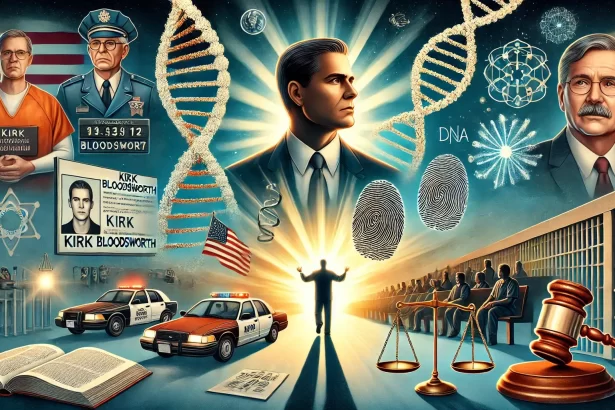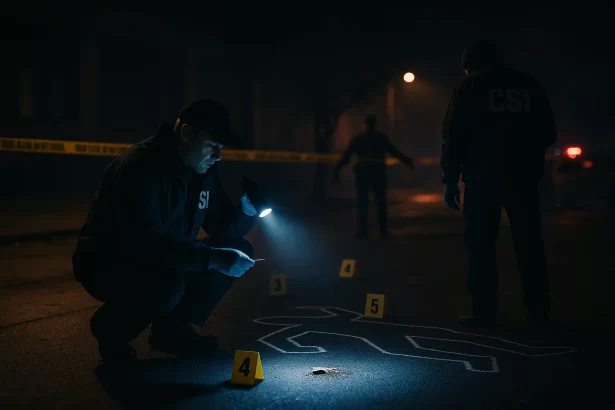AccessioningIn the forensic context, accessioning refers to the specialized process of receiving, handling, and documenting evidence and samples collected at crime scenes or related to criminal investigations. This process is crucial for maintaining the integrity and traceability of forensic evidence throughout its journey within the criminal justice system. Here are key points about accessioning in the forensic aspect: • Evidence Management: Accessioning is an integral part of evidence management in forensic laboratories and law enforcement agencies. It applies to various types of physical evidence, including biological samples, firearms, trace evidence, and digital media.
• Crime Scene Collection: Accessioning begins with the collection of evidence at crime scenes by forensic technicians and investigators. Each piece of evidence is carefully documented, labeled, and packaged to preserve its integrity.
• Chain of Custody: Establishing and maintaining a clear and unbroken chain of custody is a fundamental aspect of forensic accessioning. This involves documenting the possession, handling, and transfer of evidence from the crime scene to the laboratory and throughout the entire investigative process.
• Data Entry and Documentation: Accessioning personnel enter detailed information into records or databases, including the date and time of collection, location, description of the evidence, and the names of individuals handling it. Accurate documentation is essential for legal and investigative purposes.
• Labeling and Packaging: Proper labeling and packaging of evidence are critical to prevent contamination, tampering, or loss. Each piece of evidence receives a unique identifier, such as an evidence number or barcode, which is referenced throughout the investigation.
• Sample Handling: In cases involving biological evidence (e.g., DNA samples), accessioning includes the proper handling, preservation, and storage of samples to maintain their integrity for subsequent analysis.
• Forensic Analysis: Once evidence is accessioned and documented, it is routed to the appropriate forensic experts or laboratories for analysis. Different departments within a forensic laboratory may specialize in various types of analysis, such as DNA testing, fingerprint analysis, or ballistics.
• Quality Control and Auditing: Accessioning procedures include quality control measures to verify that evidence and documentation match and are accurate. Regular audits may be conducted to ensure compliance with established protocols.
• Legal and Court Proceedings: Proper accessioning and chain of custody documentation are crucial for presenting evidence in court. They help establish the authenticity and reliability of the evidence and its admissibility in legal proceedings.
• Forensic Software: Forensic laboratories often use specialized software systems to track and manage evidence. These systems provide electronic records and barcode scanning for efficient accessioning and tracking.
• Data Security and Privacy: Accessioning in forensic contexts must adhere to strict data security and privacy regulations to protect sensitive information related to criminal investigations and individuals involved.
In forensic investigations, the accuracy and integrity of evidence handling and accessioning are paramount to ensure the reliability of forensic results and to maintain the trust and credibility of the criminal justice system. Proper accessioning practices help preserve the chain of custody and uphold the principles of justice and due process. More in forensic science refers to the process of receiving, sorting, and labeling evidence samples, such as DNADNA, or Deoxyribonucleic Acid, is the genetic material found in cells, composed of a double helix structure. It serves as the genetic blueprint for all living organisms. More, fingerprintsFingerprint, impression made by the papillary ridges on the ends of the fingers and thumbs. Fingerprints afford an infallible means of personal identification, because the ridge arrangement on every finger of every human being is unique and does not alter with growth or age. Fingerprints serve to reveal an individual’s true identity despite personal denial, assumed names, or changes in personal appearance resulting from age, disease, plastic surgery, or accident. The practice of utilizing fingerprints as a means of identification, referred to as dactyloscopy, is an indispensable aid to modern law enforcement. More, and blood samples. This step is critical as it plays a key role in ensuring the accuracy and reliability of forensic testing results. The accessioning process in forensic science is similar to that of laboratory medicine, with the specimen accessioner responsible for ensuring that each sample is properly identified and distributed to the appropriate department for analysis. The careful management of the accessioning process is essential to ensure that justice is served and the public is protected. The accessioning process in forensic science requires a high level of attention to detail and a thorough understanding of forensic procedures and protocols.
Accessioning
Forensic Analyst by Profession. With Simplyforensic.com striving to provide a one-stop-all-in-one platform with accessible, reliable, and media-rich content related to forensic science. Education background in B.Sc.Biotechnology and Master of Science in forensic science.




